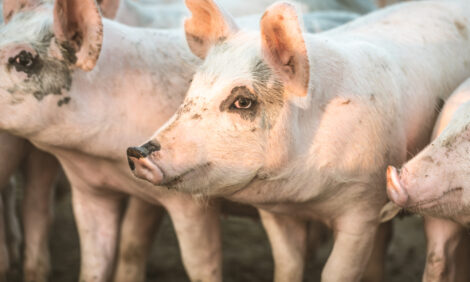



What to Take Away from Canada’s Vast Agriculture Survey
CANADA - Canada’s agricultural industry received its five-yearly health check this month, with the publication of the 2016 Census of Canadian Agriculture – an incredibly detailed and comprehensive insight into the country’s farming sector. Angela Lovell pulls out the key stats and trends.There are fewer agricultural operations in Canada today than there were five years ago, and although many are still family owned, they are larger and are growing more crops.
The newly released 2016 Census of Canadian Agriculture recorded 193,492 agricultural operations, down almost six per cent from 2011. Meanwhile, average farm size has increased to 820 acres from 779 acres, and cropland area has increased by almost seven per cent to a record 93.4 million acres, which accounts for almost 59 per cent of total farm area.
The good news for Canadian agriculture is that even though the overall number of farm operators in Canada continues to decline, there are more young people entering the industry than at any time during the past 45 years. The number of young farmers (that is, operators recorded in the census who were under the age of 35) had increased by three per cent from 2011 – the first time this age category has grown since 1991 – and they now make up just over nine per cent of all farm operators. The province of Manitoba has the largest proportion of farm operators under 35 years of age and the second youngest population of farm operators in Canada (after Quebec).
More women farmers
There are now two female agricultural operators for every five male operators in Canada, and they account for almost 29 per cent of all farm operators (up from just over 27 per cent in 2011). British Columbia in the west of the country is leading the trend, with the highest proportion of female farm operators (37.5 per cent) in Canada.
The proportion of Canadian farms operated solely by women grew by almost two per cent, and young women seem to be entering the industry at a faster pace than young men. The number of agricultural operations run solely by women under the age of 35 has grown by 113 per cent to 1,045 in the past five years. Operations solely run by male operators in the same age category, meanwhile, only increased by 24 per cent.
Although the trend for young farmers entering agriculture is encouraging, the average age of farmers has climbed to 55, and farmers aged 55 to 59 still make up the majority of operators across Canada.
More land rented
Farmland prices in Canada have been rising at a dramatic pace since 2011, spiking at an average increase of 19 and 22 per cent in 2012 and 2103 respectively. The average cost per acre across Canada is $2,696, an increase of almost 39 per cent from the previous census, but land prices are highly variable in different regions of the country and remain particularly strong in western Canada. The increase in land costs can be a barrier to establishing or expanding farm operations.
Given the high cost of purchasing farmland, it’s not surprising that more young farmers are renting land instead. Just over half of farmers aged 35 and under rented land in 2016, compared with 35 per cent of all agricultural operations. In all, more than 40 million acres are now under some form of rental agreement.
Farmers are working fewer hours
Canadian farmers are increasingly embracing technological innovation as a way to grow their farms without increasing labour requirements and costs. In 2010, more than 40 per cent of farm operators worked more than 40 hours per week – but that figure had dropped to 37.5 per cent by 2015, although the proportion varied by operation type and age group, with dairy operators and those under the age of 35 being most likely to work 40 or more hours a week.
The number of farmers taking on additional, off-farm employment also declined over the census period from almost 47 per cent of operators.
Optimising land use
Innovations in plant genetics, fertiliser and seeding technology, and changes in the type of crops grown, have contributed to an increase in the acres of cropland under constant cultivation. The adoption of no-till seeding technology – which allows farmers to retain crop stubble to trap snow, help conserve moisture and improve soil structure – has been a significant factor in reducing land in summer fallow by more than 57 per cent. The total area of land seeded using no-till technology increased by almost 17 per cent to 48.2 million acres between 2011 and 2016.
Diverse farm operations
Oilseed and grain farms account for almost 33 per cent of all Canadian agricultural operations and continue to constitute the highest proportion of farms in Canada, with most concentrated in Ontario and the Prairie provinces of Alberta, Saskatchewan and Manitoba. Although beef ranching and feedlot operations declined by 3.7 per cent over the past five years, they still account for the second highest proportion (24 per cent) of all operations.
Although canola and spring wheat dominate crops in western Canada and soybeans, corn and winter wheat are staples in the east, soybean has made significant inroads in western Canada over the past five years, as earlier maturing varieties have been developed to suit short, Prairie growing seasons. Manitoba soybean acres have doubled in the past five years, and the province now accounts for one-third of all soybean acreage in the country.
Corporate farms on the rise
As farm size and complexity have increased over the years, more farms are incorporating because of the management, taxation and legal advantages that incorporation offers to the farm business. Forty-five years ago, 97 per cent of Canadian farms were sole proprietorships or partnerships, but by 2016 only three-quarters had this organisational structure. The remaining 25 per cent of farms are now incorporated, and most are still family owned.
As the average age of farmers in Canada continues to rise, succession planning is an issue that many family farms are dealing with – and for the first time, the Census of Agriculture includes information about this. Surprisingly, only 8.4 per cent of all agricultural operations have a written succession plan. Capital-intensive, supply-managed operations such as dairy, milk, poultry and egg farms were most likely to have a formal succession plan in place.
You can view the 2016 Census of Canadian Agriculture by clicking here.









